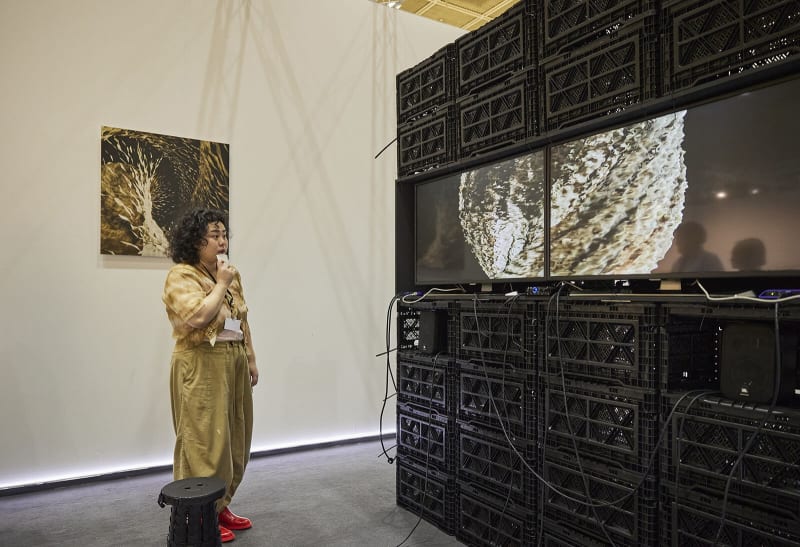Turbine Tropics (2023) on show with Yeo Workshop at Frieze Seoul 2023, Priyageetha Dia Image: Courtesy of Lets Studio and Frieze
分享
- Tumblr
Seoul is a city of screens. The Coex convention centre in Gangnam-gu, home to the Frieze Seoul and Kiaf SEOUL fairs (September 6-10, 2023), is a digital billboard bonanza of Times Square-like proportions. But these digital surfaces aren’t limited to the central business district, they are ubiquitous. And this Seoul Art Week (September 1-10) screens proliferated in the art scene, too.
Clara Che Wei Peh, a Singapore-based writer and curator specialising in NFTs and digital art, agreed that “there seemed to be fewer booths with digital and new media works (in the fairs) this year.” She noted that Yeo Workshop’s presentation of Priyageetha Dia’s work was a standout. “The two-channel video was installed in the middle of a structure made out of plastic shipping crates, a striking installation of hardware and an amplification of the work’s focus on colonial plantation systems and data extractivism,” she says. Another booth with a notable digital work was the Korean gallery Arario, which included pieces by the Indian video art pioneer Nalini Malani (the Seoul branch of the gallery is also holding a solo show of her work titled My Reality Is Different until October 21).
As with all good “art weeks” there were more exhibitions, talks, and events than were physically possible to attend. But audiences seem to be responding: Kiaf reported more than 80,000 visitors, up 10,000 from last year’s numbers, and Frieze said more than 70,000 people attended its fair. “It seems to me that Seoul has become one of the most exciting art hubs in Asia, with reputable museums, two fairs, and a growing number of blue-chip galleries choosing Seoul as their Asian outpost,” Che Wei Peh says. But one thing seems clear: while Korea’s artists continue to experiment and break new ground digitally, it is yet to become saleable. Until then, it seems commercial entities and local institutions will be footing the bill.

